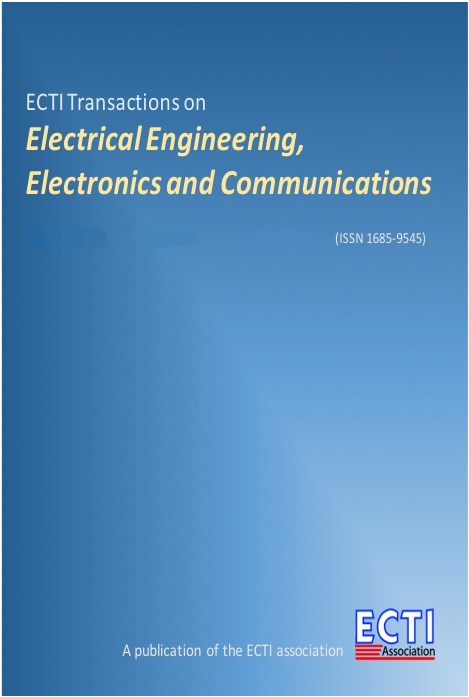Harmonics Mitigation of a Solar PV-Fuel Cell Based Microgrid System using a Shunt Active Power Filter
Main Article Content
Abstract
The increased penetration of distributed energy resources is inspiring the entire design of conventional electrical power systems. A Microgrid (MG) includes distributed generation, loads, energy storage, and a control system capable of operating in grid-connected mode and/or island mode. The power quality (PQ) issue is one of the main technical challenges in an MG power system. To improve PQ, it is necessary to analyze the harmonic distortion of the system. Moreover, harmonic distortion in MG networks has significantly reduced PQ, affecting the stability of the system. The shunt active power filter (SAPF) has been extensively used to diminish the current harmonics and verified as being the best solution. Hence, in this paper, the impact of PQ issues in an adopted standalone MG system (comprising solar and fuel cell based renewable energy sources) is investigated in the presence of SAPF. The SAPF is realized using a conventional synchronous reference frame (SRF) technique for current generation with a pulse-width modulation voltage source inverter technique to generate pulses for the inverter along with a PI controller to regulate the DC-link capacitor voltage. The proposed model is developed in MATLAB/SIMULINK and the results validate the superiority of the proposed technique over others in terms of harmonic elimination.
Article Details
This journal provides immediate open access to its content on the principle that making research freely available to the public supports a greater global exchange of knowledge.
- Creative Commons Copyright License
The journal allows readers to download and share all published articles as long as they properly cite such articles; however, they cannot change them or use them commercially. This is classified as CC BY-NC-ND for the creative commons license.
- Retention of Copyright and Publishing Rights
The journal allows the authors of the published articles to hold copyrights and publishing rights without restrictions.
References
[2] R. Ahmadi and M.Ferdowsi, “Improving the Performance of a Line Regulating Converter in a Converter-Dominated DC Microgrid System”, IEEE Transactions on Smart Grid, Vol..5, No.5, pp. 2553-2563, 2014.
[3] B.Singh, K. Al-Haddad., and Chandra A., “A review of active filters for power quality improvement”, IEEE Transactions on Industrial Electronics, Vol. 46, No.5, pp.960-971,1999.
[4] N. Zaveri and A. Chudasama “Control strategies for harmonic mitigation and power factor correction using shunt active filter under various source voltage conditions” Electrical Power and Energy Systems, Vol. 42, No.1, pp. 661–671,” Nov-2012.
[5] R, Arnold, “Solutions to the power quality problem” Power Engineering Journal, Vol.15, No.2, pp.65-73, April-2001.
[6] P. Karuppanan, and K.K Mahapatra, “PI, PID and Fuzzy Logic Controlled Cascaded Voltage Source Inverter based Active Filter for Power Line Conditioners” WSEAS Transaction on Power Systems, Vol. 6, No.4, pp.100-109, Oct-2011.
[7] S. Samal and P. K. Hota, “Power Quality Improvement by Solar Photo-voltaic/Wind Energy Integrated System Using Unified Power Quality Conditioner”, International Journal of Power Electronics and Drive Systems. Vol. 8, No.3, pp. 1424, 2017.
[8] S. Samal and P. K. Hota, “Power Quality Improvement by Solar Photo-voltaic/Fuel Cell Integrated System Using Unified Power Quality Conditioner”, International Journal of Renewable Energy Research (IJRER). Vol. 7, No.4 pp.2075-84, 2017.
[9] S. Samal and P. K. Hota, “Design and analysis of solar PV-fuel cell and wind energy based microgrid system for power quality improvement”, Cogent Engineering. No.4, pp.1402453, 2017.
[10] M.A Hannan. and A Mohamed, “PSCAD/EMTDC Simulation of Unified Series-Shunt Compensator for Power Quality Improvement” IEEE Transaction on Power Delivery, Vol. 20, No. 2, pp.1650-1656, April-2005.
[11] W.M Grady, M.J. Samotyj and A.H. Noyola “Survey of Active Power Line Conditioning Methodologies” IEEE Transaction on Power Delivery, Vol.5, No.3, pp. 1536-1542, July-1990.”
[12] M.I.M Montero, E.R Cadaval, and F.B Gonzalez., "Comparison of control strategies for shunt active power filters in three-phase four-wire systems." IEEE Transactions on Power Electronics, Vol. 22, No. 1, pp. 229-236, 2007.””
[13] S.K Jain, P. Agarwal, and H.O Gupta, “Simulation and experimental investigations on a shunt active power filter for harmonics and reactive power compensation." IETE Technical Review, Vol. 20, No. 6, pp.481-492, 2003.”
[14] N Femia, G Petrone, G Spagnuolo, and M. Vitelli, “Optimization of perturb and observe maximum power point tracking method." IEEE Transactions on Power Electronic, Vol.20, No. 4, pp.963-973, 2005”
[15] I.H Altas, and Sharaf, A.M. “A photovoltaic array simulation model for Matlab-Simulink GUI environment." In Clean Electrical Power, ICCEP’07, pp. 341-345, 2007.
[16] J. Viinamaki, J. Jokipii, T. Messo, T. Suntio, M. Sitbon. and A. Kuperman, “Comprehensive dynamic analysis of photovoltaic generator interfacing DC–DC boost power stage," IET Renewable Power Generation, Sept. 2014.”
[17] A Kalirasu, and S.S, Dash, “Simulation of closed loop controlled boost converter for solar installation”, Serbian Journal of Electrical Engineering, Vol.7, pp.121-130, 2010.”
[18] S. Samal, and P.K., Hota, 2018, “Wind Energy Fed UPQC System for Power Quality Improvement”. Bulletin of Electrical Engineering and Informatics, 7(3), pp.495-504.
[19] T.A. Nergaard, J.F. Ferrell, L.G. Leslie, and J.S Lai, “Design considerations for a 48 V fuel cell to split single phase inverter system with ultra-capacitor energy storage”, In Power Electronics Specialists Conference, Pesc 02,Vol. 4, pp. 2007-2012,2002.”
[20] G. Bucci, F. Ciancetta, E. Fiorucci, and F. Vegliò, “An experimental approach to the modeling of PEM fuel cells in dynamic conditions”, In Power Tech, pp.1094-1099, 2007.”


